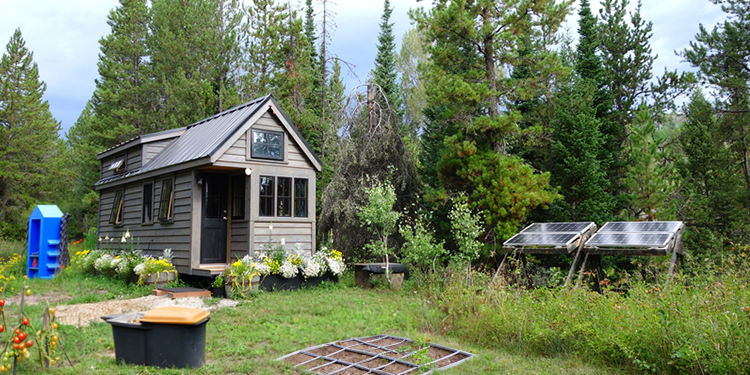
www.newsbusters.org
Mika Wasn't 'Close' To Calling On Biden To Quit. She Seems A Lot Closer Now!
On Monday, in the wake of Biden's disastrous debate performance, Mika Brzezinski claimed, as we noted here, that she wasn't ready "to count Joe Biden out, not even close. " To the contrary, she believed that he was still "the man for the moment."
But how things have changed in two short days. On Wednesday's Morning Joe, Mika didn't make a peep of protest in response to an avalanche of reporting by her panel suggesting that Biden's mental health has seriously deteriorated and that support among Democrats has cratered.
Joe Scarborough was absent from the show for the third consecutive day since last Friday, when he strongly suggested that Biden quit the race. On Monday, Mika claimed he was on a "planned vacation." Today, in opening the show's panel, she made no reference to Scarborough at all. Almost as if Joe has been nonpersoned, Soviet-style.
This isn't a vacation, or a mere absence. It's an absolute abdication by Scarborough, the guy who, until turning on Biden, had served as his shameless, servile, toady, defending him at every turn and attacking any critics. What will Scarborough say when he comes crawling back?
The panel's take on Biden and his political prospects was absolutely devastating.
Willie Geist was openly skeptical of Biden's explanation that his poor debate performance was the result of a heavy travel schedule. Willie pointed out that Biden had been back in the US for 11 days before the debate, the last seven of which he spent resting and preparing in the peaceful confines of Camp David.
Willie also quoted at length from a New York Times article reporting that "In the weeks and months leading up to the debate, several current and former officials who encountered [Biden] behind closed doors noticed he increasingly appeared confused or listless, or would lose the thread of conversations."
Eli Stokols of Politico reported that many Democrats are accusing Biden's senior advisers of putting their personal interest above those of Biden and the country. The notion was that the advisers shielded Biden from any suggestion that he should decline to run again because all of them "would benefit by the president getting another four years in the Oval Office."
Sokols discussed an article he co-wrote: ‘We’ve all enabled the situation’: Dems turn on Biden’s inner sanctum post debate." Of course, chief among Biden's media enablers was none other than the shameless Joe Scarborough himself.
Axios founder JimVandeHei reported, based on interviews with dozens of Democrat House members, that they are "furious" with Biden. Virtually none of them want him to stay in the race, and to the contrary, want Senate Majority Leader Chuck Schumer and House Minority Leader Hakeem Jeffries to have "a very serious conversation about getting out of the race before the convention, so they can have a messy but somewhat orderly transition to somebody else."
Note: If Biden, battered by the Morning Joe segment, turned to CNN This Morning seeking solace, he would have been bitterly disappointed. Host Kasie Hunt opened the 6 am hour by saying, "There does seem to be this groundswell, this sense of a boulder rolling down the hill at President Biden." And the best that Biden's former comms director Kate Beningfield could come up with was that polling indicates that "the bottom has actually not fallen out from under Joe Biden." Yet!
Here's the transcript.
MSNBC
Morning Joe
7/3/24
6:01 am EDT
MIKA BRZEZINSKI: Good morning and welcome to Morning Joe. It is Wednesday, July 3rd. Along with Willie and me, we have the co-founder and CEO of Axios, Jim VandeHei, the co-host of MSNBC's The Weekend, getting up way too early, Symone Sanders-Townsend, and White House reporter at Politico, Eli Stokols is with us this morning. [No mention of Scarborough's continued absence.]
. . .
WILLIE GEIST: During a campaign fund-raiser in Virginia, that was last night, the president apologized for his lackluster debate performance, blaming it on his extensive travel in the weeks before.
He told the crowd, he didn't listen to his staff, and joked he almost fell asleep on stage, adding, quote, this is not an excuse but an explanation.
The president had traveled to France for the 80th anniversary of D-day in early June, then went to Italy and Los Angeles. He returned to Washington on June 16th. That was 11 days before the debate.
The New York Times this morning is taking a look at President Biden in the weeks and months before his debate performance. The paper reports:
"Mr. Biden was drained enough from the back-to-back trips to Europe that his team cut his planned debate preparation by two days so he could at his house.
"In the weeks and months leading up to the debate, several current and former officials who encountered him behind closed doors noticed he increasingly appeared confused or listless, or would lose the thread of conversations."
This is all from the New York Times. The paper continued:
"Like many people his age, Mr. Biden, 81, has long experienced instances in which he mangled a sentence, forgot a name, or mixed up a few facts, even though he could be sharp and engaged most of the time. But In the weeks and months leading up to the debate, several current and former officials who encountered him behind closed doors noticed he increasingly appeared confused or listless, or would lose the thread of conversations.
So, Eli, you're part of a reporting team for Politico, that includes our buddy Jonathan Lemire, out with a new piece titled "We've all enabled the situation: Dems turn on Biden's inner sanctum post debate."
. . .
ELI STOKOLS: We talked to more than two dozen people who are close to this administration and close to the senior staff. And it's understandable after a debate performance like that, that that there would be a lot of frustration and finger pointing. And a lot of that has been directed at the five or six very senior aides, people who have been with the president a long time, who, a lot of people throughout the party now are sort of blaming them for being in this predicament, for cloistering the president, trying their best to manage the age situation, to mitigate coverage of that by the media, to really attacks coverage of that by the media.
And more than anything, to come up with this rationale that he has to run for a second term. One person told us that was a conversation that just never expanded beyond the senior group, all of whom would benefit by the president getting another four years in the Oval Office.
. . .
You've got the same people cutting the ads. The same people figuring out how their going to deploy the president. And the same principals who, despite their up-close knowledge, and seeing the president every day and realizing his limitations, they came up with this rationale for him to run anyway. That he's the only person who's ever beaten Donald Trump, and thus he has to be the candidate again.
And I think now, the view across the party, at least among a lot of the people that we talked to, is that that seems to be a pretty self-serving and maybe delusional case for another four years.
GEIST: And Eli, the argument we heard last night from President Biden that he had been traveling in Europe, that's true. But as I pointed out, he'd been home for 11 days, and been resting at Camp David for a week by the time the debate took place. Which kind of reinforces the point, does it not, that he needed 11 days to rest before a debate, and still performed that way. Is that the argument that they're going to go with for his performance on Thursday?
STOKOLS: Well, they keep kind of adjusting the argument, which is a tell, in and of itself. First it was just a bad night. And now, it's, oh, I was traveling 11 days before the debate a lot. And granted, those were grueling trips, going from Italy to Los Angeles overnight, doing the fundraiser after two trips to Europe. That is a lot to do right before the debate. And some people were nervous about that ahead of time. But the discrepancies here, the sort of changing picture: none of this is reassuring Democrats who are really concerned at this point about the sustainability of Biden's candidacy.
. . .
MIKA BRZEZINSKI: Jim VandeHei, your piece confident with Mike Allen for Axios this morning, for your Behind-the-Curtain column: "Democratic Rage at Biden Rises." Explain what you're hearing.
JIM VANDEHEI: Yeah, I would say we've talked to literally dozens of House Members, most aren't going to go on the record yet. The ones who are going to go on the record already have. They're furious. Like, they're just not buying it.
Now I would say they're madder about the response to the debate than the debate itself. They can't believe that he's deflecting and saying it's much ado about nothing. They can't believe he's blaming staff for it. And now this idea that an 11-day jet lag would cause you to have a poor debate performance strikes them as a crazy explanation for it.
If you're a Member of Congress, to be honest, all you care about is your voters first and your donors second. Yeah, you like the president if he helps you, but if he doesn't, you will turn on him, because you care about self-preservation.
So they're talking to donors. Donors are furious. Voters are telling them what Lloyd Doggett's voters are telling him, which is we want him to step aside. That's why yesterday, we talked to several people who were on multiple calls with a lot of Members, and when there was a show of hands or, hey, should he stay in, almost nobody said that he should stay in.
They want Hakeem Jeffries, they want Chuck Schumer, the two Democratic leaders, to go in and talk to him, and have a very serious conversation about getting out of the race before the convention, so they can have a messy but somewhat orderly transition to somebody else.















